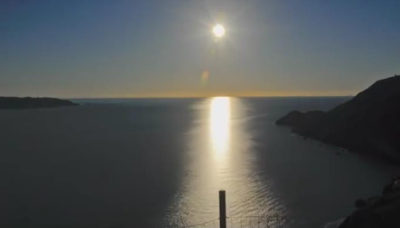If Earth was a sphere the northern and southern hemispheres would be more similar
Among the more pathetic "proofs" of Eric Dubay are examples of how different the northern and southern hemispheres are, especially the arctic and antarctic. His simplistic argument is that since Earth's hemispheres are the same shape the weather, flora and fauna should also be the same.
What Dubay fails to understand is that while the overall shape is the same, there are very big differences in the volume and distribution of land which has an enormous effect.
50. Dubay thinks that Arcrtic and Antarctic should not be so different on a spherical Earth

“If the Earth were truly a globe, the Arctic and Antarctic polar regions and areas of comparable latitude North and South of the equator should share similar conditions and characteristics such as comparable temperatures, seasonal changes, length of daylight, plant and animal life. In reality, however, the Arctic/Antarctic regions and areas of comparable latitude North/South of the equator differ greatly in many ways entirely inconsistent with the ball model and entirely consistent with the flat model.”
51. Dubay does not think that the Antarctic should be so much colder than the Arctic on a spherical Earth

“Antarctica is by far the coldest place on Earth with an average annual temperature of approximately -57 degrees Fahrenheit, and a record low of -135.8! The average annual temperature at the North Pole, however, is a comparatively warm 4 degrees. Throughout the year, temperatures in the Antarctic vary less than half the amount at comparable Arctic latitudes. The Northern Arctic region enjoys moderately warm summers and manageable winters, whereas the Southern Antarctic region never even warms enough to melt the perpetual snow and ice. On a tilting, wobbling, ball-Earth spinning uniformly around the Sun, Arctic and Antarctic temperatures and seasons should not vary so greatly.”
52. Dubay thinks that Iceland and the Isle of Georgia should have a similar abundance of animals and plants

“Iceland at 65 degrees North latitude is home to 870 species of native plants and abundant various animal life. Compare this with the Isle of Georgia at just 54 degrees South latitude where there are only 18 species of native plants and animal life is almost non-existent. The same latitude as Canada or England in the North where dense forests of various tall trees abound, the infamous Captain Cook wrote of Georgia that he was unable to find a single shrub large enough to make a toothpick! Cook wrote, “Not a tree was to be seen. The lands which lie to the south are doomed by nature to perpetual frigidness - never to feel the warmth of the sun’s rays; whose horrible and savage aspect I have not words to describe. Even marine life is sparse in certain tracts of vast extent, and the sea-bird is seldom observed flying over such lonely wastes. The contrasts between the limits of organic life in Arctic and Antarctic zones is very remarkable and significant.”
53. Dubay lies that summer days are much longer in the northern hemisphere and winter days are much shorter in the southern hemisphere, and that this is only possible on a flat Earth

“At places of comparable latitude North and South, the Sun behaves very differently than it would on a spinning ball Earth but precisely how it should on a flat Earth. For example, the longest summer days North of the equator are much longer than those South of the equator, and the shortest winter days North of the equator are much shorter than the shortest South of the equator. This is inexplicable on a uniformly spinning, wobbling ball Earth but fits exactly on the flat model with the Sun traveling circles over and around the Earth from Tropic to Tropic.”
54. Claims that at similar north and south latitudes dawn and dusk last longer in the northern hemisphere than the southern, and that this is only possible on a flat Earth

“At places of comparable latitude North and South, dawn and dusk happen very differently than they would on a spinning ball, but precisely how they should on a flat Earth. In the North dawn and dusk come slowly and last far longer than in the South where they come and go very quickly. Certain places in the North twilight can last for over an hour while at comparable Southern latitudes within a few minutes the sunlight completely disappears. This is inexplicable on a uniformly spinning, wobbling ball Earth but is exactly what is expected on a flat Earth with the Sun traveling faster, wider circles over the South and slower, narrower circles over the North.”
55. A flat Earth explains the difference in Arctic/Antarctic temperatures

“If the Sun circles over and around the Earth every 24 hours, steadily travelling from Tropic to Tropic every 6 months, it follows that the Northern, central region would annually receive far more heat and sunlight than the Southern circumferential region. Since the Sun must sweep over the larger Southern region in the same 24 hours it has to pass over the smaller Northern region, its passage must necessarily be proportionally faster as well. This perfectly explains the differences in Arctic/Antarctic temperatures, seasons, length of daylight, plant and animal life; this is why the Antarctic morning dawn and evening twilight are very abrupt compared with the North; and this explains why many midsummer Arctic nights the Sun does not set at all!”




Comments
Post a Comment